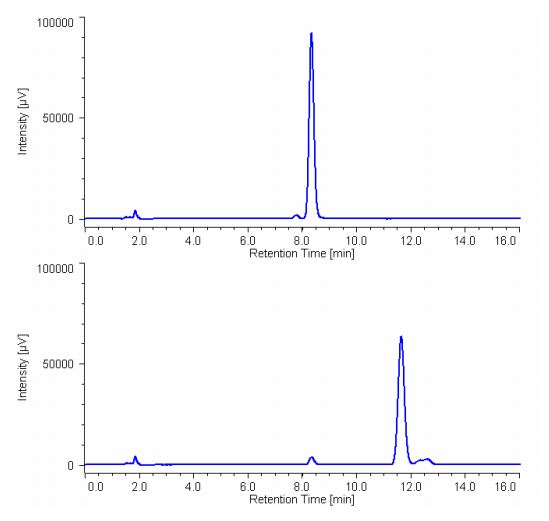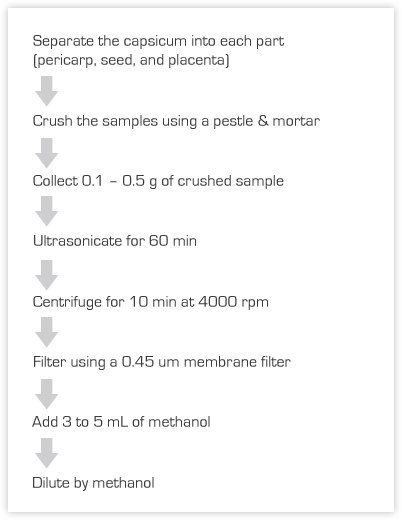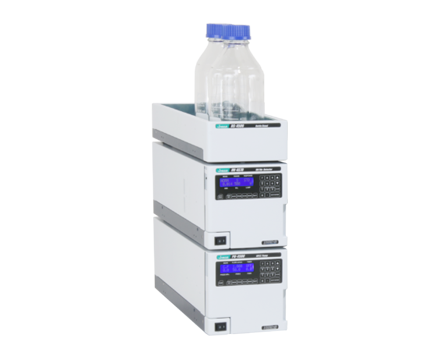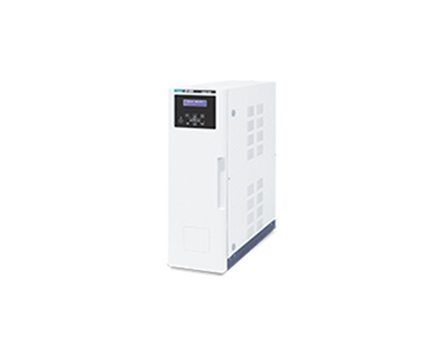HPLC Analysis of Capsaicin and Dihydrocapsaicin in Capsicum
January 5, 2024
Introduction

The pungent components (which are responsible for the ‘hotness’) contained in the fruit of the genus Capsicum are collectively referred to as the Capsaicinoids. Capsaicin and dihydrocapsaicin in Capsicums constitute 80 – 90% of the pungent components; these compounds are now widely used in medical products and health foods.
It is known that the capsaicinoids are present in differing amounts in the various parts of the capsicum fruit. In this experiment the capsaicinoid content of the pericarp, seed and placenta from each of four types of capsicum was measured – Capsicum frutescens, Serrano, Finger hot and Habanero.
Experimental
Equipment
| Pump: | PU-4180-LPG |
| Column oven: | CO-4061 |
| Autosampler: | AS-4050 |
| Detector: | MD-4010 |
Conditions
| Column: | CrestPak C18S (4.6 mmID x 150 mmL, 5 mm) |
| Eluent A: | 1% Acetic acid/Acetonitrile (50/50) |
| Eluent B: | Acetonitrile |
| Gradient condition: | (A/B), 0 min (100/0), 15 min (100/0), 15.05 min (0/100) |
| 20.00 min (0/100), 20.05 min (100/0) 1 cycle; 35.5 min | |
| Flow rate: | 1.0 mL/min |
| Column temp.: | 40°C |
| Wavelength: | 280 nm |
| Injection volume: | 20 mL |
| Standard sample: | Capsaicin 10, 50, 100 µg/mL in methanol |
| Dihydrocapsaicin 10, 50, 100 µg/mL in methanol |
Keywords
510003H, capsaicin, Dihydrocapsaicin, capsicum, pepper, Scoville Scale
Results
The chromatograms of 10 µg/mL each of Capsaicin and Dihydrocapsaicin standards are shown in Fig. 1. Good separation was obtained within 12 minutes. The sampling procedure of the actual samples is shown in Fig. 2.

1: Capsaicin, 2: Dihydrocapsaicin 2µg each

The chromatograms for each of 4 types of capsicum are shown in Fig. 3. In Table 1 the Capsaicin and Dihydrocapsaicin content in each Capsicum sample (wet weight) are shown. It is known that the contents are very different depending on each part and for the all capsicum, Placenta part contains Capsaicin and Dihydrocapsaicin the most.

Table 1 Capsaicin and Dihydrocapsaicin content in each part of the Capsicum
| Sample | Components in each sample [µg/g] | |
|---|---|---|
| Capsaicin | Dihydrocapsaicin | |
| Capsicum frutescens | ||
| Pericarp | 154 | 120 |
| Seed | 713 | 542 |
| Placenta | 9540 | 7410 |
| Serrano | ||
| Pericarp | 7.64 | 4.47 |
| Seed | 387 | 229 |
| Placenta | 1080 | 644 |
| Finger hot | ||
| Pericarp | N.D. | N.D. |
| Seed | 2.89 | 2.87 |
| Placenta | 217 | 160 |
| Habanero | ||
| Pericarp | 134 | 43.2 |
| Seed | 297 | 92.5 |
| Placenta | 8720 | 2750 |
| N.D.: Not detected | ||
Conclusion
It is well known that the amount of capsaicinoids present is very different depending on the part of the capsicum fruit and is also widely different between species; as seen here the placenta contains the majority of capsaicin and dihydrocapsaicin, followed by the seed and then the pericarp which may contain little or no capsaicinoids. This simple application demonstrates a reliable sample preparation combined with a routine chromatographic separation to determine the concentration of capsaicinoids.
Featured Products:

HPLC Analysis of Capsaicin and Dihydrocapsaicin in Capsicum
Introduction

The pungent components (which are responsible for the ‘hotness’) contained in the fruit of the genus Capsicum are collectively referred to as the Capsaicinoids. Capsaicin and dihydrocapsaicin in Capsicums constitute 80 – 90% of the pungent components; these compounds are now widely used in medical products and health foods.
It is known that the capsaicinoids are present in differing amounts in the various parts of the capsicum fruit. In this experiment the capsaicinoid content of the pericarp, seed and placenta from each of four types of capsicum was measured – Capsicum frutescens, Serrano, Finger hot and Habanero.
Experimental
Equipment
| Pump: | PU-4180-LPG |
| Column oven: | CO-4061 |
| Autosampler: | AS-4050 |
| Detector: | MD-4010 |
Conditions
| Column: | CrestPak C18S (4.6 mmID x 150 mmL, 5 mm) |
| Eluent A: | 1% Acetic acid/Acetonitrile (50/50) |
| Eluent B: | Acetonitrile |
| Gradient condition: | (A/B), 0 min (100/0), 15 min (100/0), 15.05 min (0/100) |
| 20.00 min (0/100), 20.05 min (100/0) 1 cycle; 35.5 min | |
| Flow rate: | 1.0 mL/min |
| Column temp.: | 40°C |
| Wavelength: | 280 nm |
| Injection volume: | 20 mL |
| Standard sample: | Capsaicin 10, 50, 100 µg/mL in methanol |
| Dihydrocapsaicin 10, 50, 100 µg/mL in methanol |
Results
The chromatograms of 10 µg/mL each of Capsaicin and Dihydrocapsaicin standards are shown in Fig. 1. Good separation was obtained within 12 minutes. The sampling procedure of the actual samples is shown in Fig. 2.

1: Capsaicin, 2: Dihydrocapsaicin 2µg each

The chromatograms for each of 4 types of capsicum are shown in Fig. 3. In Table 1 the Capsaicin and Dihydrocapsaicin content in each Capsicum sample (wet weight) are shown. It is known that the contents are very different depending on each part and for the all capsicum, Placenta part contains Capsaicin and Dihydrocapsaicin the most.

Table 1 Capsaicin and Dihydrocapsaicin content in each part of the Capsicum
| Sample | Components in each sample [µg/g] | |
|---|---|---|
| Capsaicin | Dihydrocapsaicin | |
| Capsicum frutescens | ||
| Pericarp | 154 | 120 |
| Seed | 713 | 542 |
| Placenta | 9540 | 7410 |
| Serrano | ||
| Pericarp | 7.64 | 4.47 |
| Seed | 387 | 229 |
| Placenta | 1080 | 644 |
| Finger hot | ||
| Pericarp | N.D. | N.D. |
| Seed | 2.89 | 2.87 |
| Placenta | 217 | 160 |
| Habanero | ||
| Pericarp | 134 | 43.2 |
| Seed | 297 | 92.5 |
| Placenta | 8720 | 2750 |
| N.D.: Not detected | ||
Conclusion
It is well known that the amount of capsaicinoids present is very different depending on the part of the capsicum fruit and is also widely different between species; as seen here the placenta contains the majority of capsaicin and dihydrocapsaicin, followed by the seed and then the pericarp which may contain little or no capsaicinoids. This simple application demonstrates a reliable sample preparation combined with a routine chromatographic separation to determine the concentration of capsaicinoids.
Keywords
510003H, capsaicin, Dihydrocapsaicin, capsicum, pepper, Scoville Scale

 Download This Application
Download This Application

